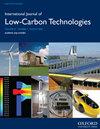涡轮增压器中后缘曲线对径向涡轮性能的影响
IF 2.3
4区 工程技术
Q3 ENERGY & FUELS
引用次数: 0
摘要
为了应对气候变化和促进发动机的可持续发展,优化涡轮增压器的开发过程对于减少排放和提高燃油经济性是必要的。本文通过比较定压比和定质量流量两种边界条件下的数值分析结果,研究了尾缘曲线对0.8 l双缸汽油机车用增压器极小径向涡轮叶轮性能的影响。尾缘的曲线取决于几个参数;然而,在本研究中,我们选择指数(n)来修改涡轮叶轮后缘型线,因为它比其他参数对曲线的影响更为显著。为此,对径向涡轮在定压比和定质量流量下的不同尾缘曲线进行了计算流体力学(CFD)分析,并对结果进行了比较。结果表明,在压力比和质量流量条件下,由于改变不充分,效率的提高可以忽略不计。然而,基于恒定压比下尾缘曲线的变化,可以观察到显著的轴功率提高。相比之下,在质量流量恒定的情况下,同样的变化导致轴功率显著下降。本文章由计算机程序翻译,如有差异,请以英文原文为准。
Influence of trailing-edge curve on the performance of radial turbine in turbocharger
To combat climate change and promote sustainable engine development, the optimization of the turbocharger development process is necessary to decrease emissions and increase fuel economy. This paper presents the influence of trailing edge curves on the performance of the significantly small radial turbine impeller of an automotive turbocharger used in a 0.8-L two-cylinder gasoline engine by comparing numerical analysis results under two boundary conditions: a constant pressure ratio and constant mass flow rate. The curve of a trailing edge depends on several parameters; however, in this study, the exponent (n) was selected to modify the turbine impeller trailing edge profile, as it exhibits a more significant influence on the curve than other parameters. Hence, computational fluid dynamics (CFD) analyses were conducted on the radial turbine for various trailing edge curves under a constant pressure ratio and constant mass flow rate, and the results were compared. The results indicated that the efficiency improvement was negligible under the pressure ratio and mass flow rate conditions due to inadequate alterations. Nevertheless, a significant shaft power improvement was observed based on changes in the trailing edge curve under a constant pressure ratio. In contrast, the same changes caused a considerable decrease in the shaft power under a constant mass flow rate.
求助全文
通过发布文献求助,成功后即可免费获取论文全文。
去求助
来源期刊

International Journal of Low-carbon Technologies
Engineering-Architecture
CiteScore
4.30
自引率
4.30%
发文量
106
审稿时长
27 weeks
期刊介绍:
The International Journal of Low-Carbon Technologies is a quarterly publication concerned with the challenge of climate change and its effects on the built environment and sustainability. The Journal publishes original, quality research papers on issues of climate change, sustainable development and the built environment related to architecture, building services engineering, civil engineering, building engineering, urban design and other disciplines. It features in-depth articles, technical notes, review papers, book reviews and special issues devoted to international conferences. The journal encourages submissions related to interdisciplinary research in the built environment. The journal is available in paper and electronic formats. All articles are peer-reviewed by leading experts in the field.
 求助内容:
求助内容: 应助结果提醒方式:
应助结果提醒方式:


